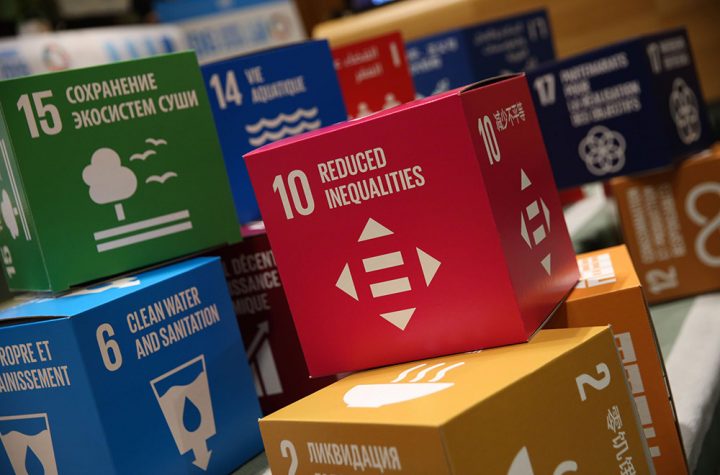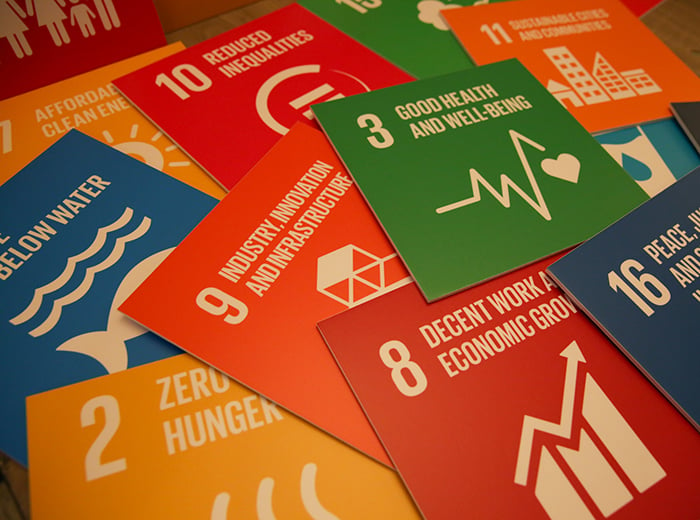By: Petra Nahmias (UNHCR), Natalia Krynsky Baal (JIPS)
For those of us working on forced displacement, it has become undeniable in recent years that any real resolution to refugee and internal displacement situations requires development as well as humanitarian interventions. This reality has, unfortunately, not always been without question and has had limited traction outside of the community working directly on these issues. The recent inclusion of an indicator on refugees in the indicator framework for the Sustainable Development Goals (SDGs) – the result of several years hard work, diplomacy and determination – is therefore a huge achievement. Here’s the story of how it came about.

What is the relevance of the SDG indicator framework for displaced and stateless people?
The 2030 Agenda for Sustainable Development appeared tailored to advance the rights and wellbeing of some of the planet’s most vulnerable and marginalized people. Indeed, the Agenda contains a pledge that no one would be left behind, and includes specific reference to refugees and other displaced people.
It may then come as a surprise to learn that in the original indicator framework, designed to measure progress towards meeting the SDGs, there was not a single indicator mentioning refugees or displacement. This is of critical importance. An unintended consequence of using an indicator framework as the measurement tool is that what is outside of the framework is not measured or reported on and therefore often interpreted as not relevant/compulsory to the achievement of the overarching goals.
What’s in the indicator framework and where is the ‘forced displacement gap’?
The original indicator framework was developed through a country-led process by the Inter-agency and Expert Group on SDG Indicators (IAEG-SDG), with regional and international agencies and other stakeholders participating as observers. Adopted by the General Assembly in July 2017, it includes over 230 indicators spread out unevenly across the 17 goals and numerous targets. Indicators are classified into three ‘tiers’, with tier 1 grouping indicators having a clear methodology and on which data is available (for more information on classification, visit the SDGs website).
There was agreement that the indicators should be disaggregated by characteristics such as ‘migratory status’ – including by refugee status (although not necessarily internally displaced people (IDPs)) – but the track record in doing so was poor (as highlighted in this excellent report by the International Rescue Committee).
Joining the IAEG-SDGs workstream on data disaggregation on behalf of EGRIS, we (UNHCR and the Joint IDP Profiling Service (JIPS)) submitted recommendations on which SDG indicators should be prioritized for disaggregation by forced displacement. Although this contribution was well received and formally included in the report to the Commission in March 2019, it was clear that an indicator relating directly to refugees was still needed.

Introducing an indicator on refugees: push-backs and breakthroughs
With more than 230 existing indicators, there was little appetite for more. It was therefore essential to have a tier 1 indicator which would not add to the reporting burden on countries, i.e. that was based upon data which we already collected through UNHCR with good availability and a clear and internationally agreed methodology. This led to the following proposal:
The number of refugees by country of origin as a proportion of the national population of that country of origin.
In other words, the percentage of a country’s population which is displaced abroad.
We also needed to make the case regarding which SDG target was not yet being adequately measured. After much discussion and consultation, it was decided to promote the indicator under target 16.3 concerning the rule of law.
The indicator was proposed informally to the IAEG-SDG towards the end of 2016. It was met with rather negative response by some who felt the indicator was too humanitarian focused to figure in a development context.
However our key window of opportunity to have the indicator included came with the comprehensive review process conducted in 2019 and which was finalized at the 10th IAEG-SDGs meeting in Addis Ababa, in October*. We had taken the concerns seriously and doubled our efforts to advocate for the indicator with both critics and champions. And it was worth it: the additional indicator put forward for the final discussion in Addis Ababa received overall strong support from IAEG-SDG members.
Finally, after three years of hard work, an indicator on refugees was going to be in the SDG indicator framework!
Why does this matter?
The specific inclusion of an indicator relating to refugees allows those advocating for refugee protection to be included in the discourse on sustainable development. For the work on improving data and statistics on refugees, this is a game-changer; for other displaced groups, this progress will also open doors. Preventing situations which generate forced displacement and finding durable solutions for those already displaced is now part of meeting the SDGs. It also highlights the humanitarian-development nexus, ensuring that it is front and center in sustainable development.
For the work on improving data and statistics on forced displacement, this is a game-changer. UNHCR is now a custodian agency for an SDG indicator and can leverage broader efforts on improving reporting on SDG progress related to refugees and asylum seekers, including facilitating access to valid information on how refugees are faring compared to other population groups and identifying gaps in terms of SDG achievements for refugees
The new SDG indicator on refugees, the international statistical recommendations on refugees and IDPs coming through the EGRIS, and the recently established UNHCR-World Bank Joint Data Center on Forced Displacement are all indicators of an increasing appreciation of existing data gaps on forcibly displaced populations, and broader policy recognition of the need for developmental intervention to solve refugee crises.
Now that the 2020 review is over, the primary work ahead of the IAEG-SDGs and its extended partner network is to focus on data disaggregation in order to live up to the normative goal of the 2030 Agenda and ensure no vulnerable groups are left behind.
*In 2019, the IAEG-SDG conducted a comprehensive review of the global indicator framework in order to submit its proposed changes to UNSC in March 2020. The review included proposals regarding refinements, revisions, replacements, additions and deletions from the 230 plus list of indicators, and was subject to a process of open consultations and subsequent final discussions during the 10th IAEG-SDGs meeting in Addis Ababa, in October 2019.
